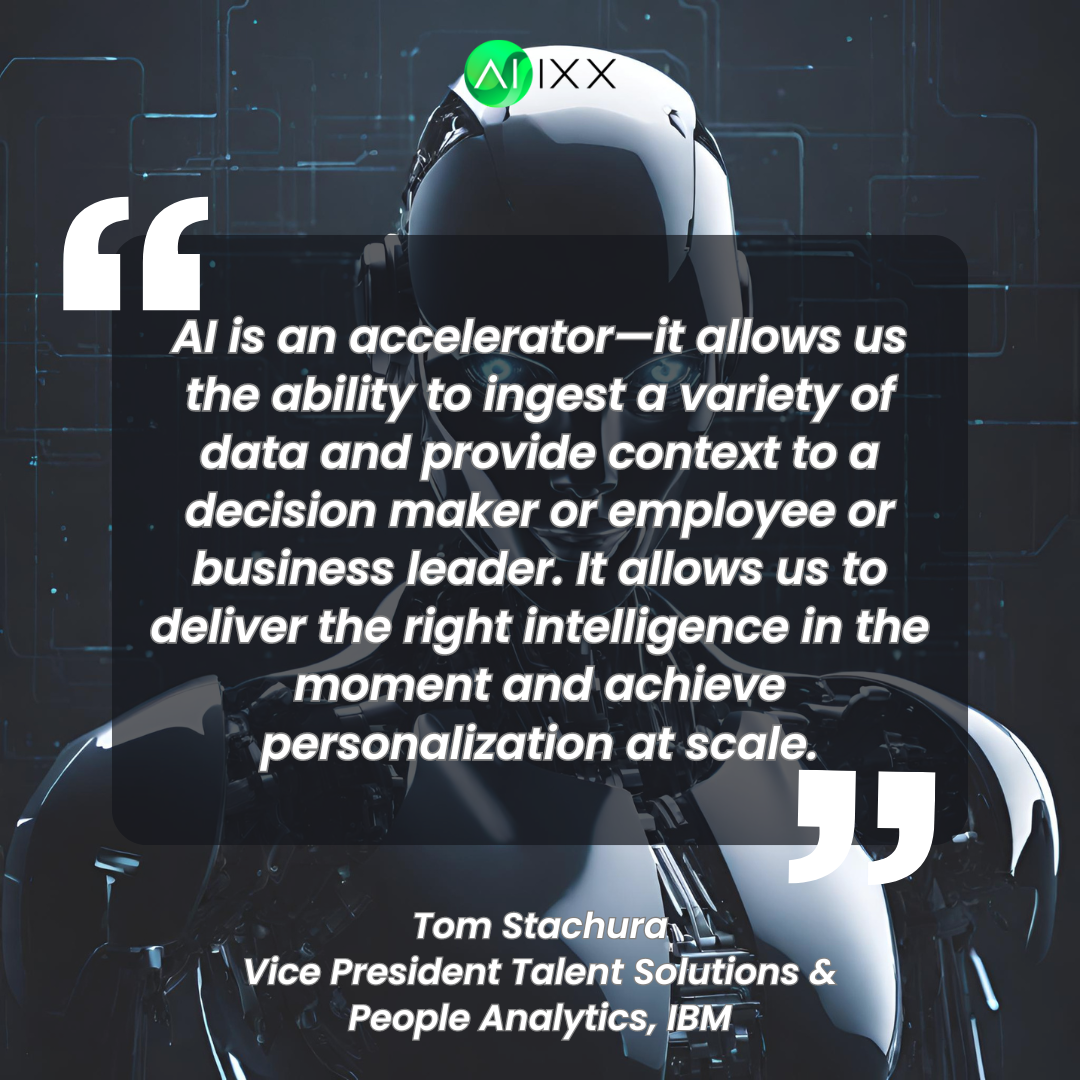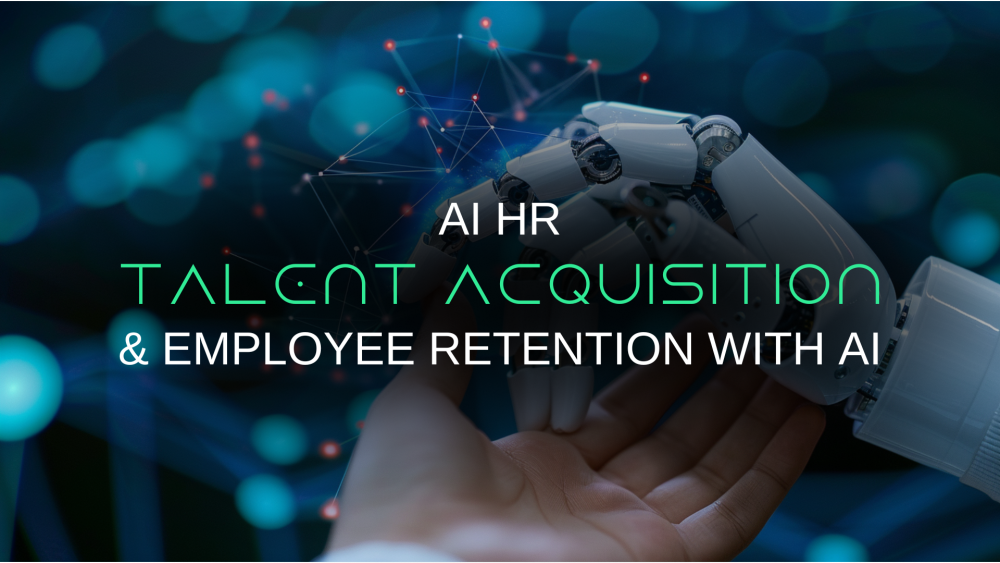AI HR – Transforming Talent Acquisition and Employee Retention with AI
HR is undergoing a serious transformation due to Artificial Intelligence.
AI HR influences the private sector and the US government. In fact, IT modernization is a key priority in the Office of Personnel Management's Strategic Plan.
This blog will discuss how AI transforms talent acquisition and employee retention and how you can benefit from these innovations.
The Impact of AI on Talent Acquisition
One of the most significant ways AI impacts HR is through talent acquisition. AI-powered tools can now source, screen, and assess candidates faster than ever before. Using advanced algorithms, HR professionals can identify the most suitable talent for their organizations, improving the efficiency of the recruitment process.
Transforming Employee Onboarding with AI
A smooth and engaging onboarding experience can improve employee retention, enhance job satisfaction, and boost productivity. This is where AI steps in, offering a range of benefits to transform traditional onboarding processes.
| Benefit | Detail |
|---|---|
| Personalization | AI can tailor the onboarding experience to each employee's details, location, role, and interests. |
| Automation | Repetitive tasks such as paperwork, training modules, and scheduling can be performed using AI. |
| Enhanced Engagement | Chatbots and virtual assistants can provide 24/7 support, answering questions and guiding new hires. |
| Faster Onboarding | AI can reduce the time it takes for new employees to become productive team members. |
| Analytics and Feedback | AI can collect and analyze data to provide insights into the effectiveness of the onboarding process. |
| Challenge | Detail |
|---|---|
| Data Privacy | While AI can streamline processes, there is a risk of losing the crucial personal touch in the onboarding process. |
| Integration Issues | Integrating AI systems with existing HR infrastructure can be complex. |
| Lack of Human Touch | While AI can streamline processes, there is a risk of losing the personal touch that is crucial in the onboarding process. |
| Bias and Fairness | AI algorithms must be carefully designed to avoid biases in decision-making processes, ensuring fairness and equality. |
| Initial Investment | Maintaining privacy and security can be challenging with AI, especially with collecting and utilizing personal data. |
AI-driven Performance Management and Workforce Analytics
Generative AI allows HR departments to streamline, automate, or potentially replace outdated processes. According to Gartner, 81% of HR leaders have considered or implemented AI solutions to enhance efficiency.
HR departments can gain insights, improve decision-making, and enhance organizational performance with AI. Here’s how AI is reshaping these factors for human resource personnel:
- Predictive Analytics: 69% of organizations believe workforce analytics are critical to smooth HR functioning. AI can analyze vast amounts of data to predict future trends and behaviors. It can forecast which employees are likely to leave the company, allowing HR to take proactive measures to retain top talent.
- Objective Performance Evaluation: AI eliminates biases in performance evaluation by focusing solely on data-driven metrics, ensuring fairness and equality.
- Identifying Training Needs: Through data analysis, AI can identify skills gaps and training needs within the workforce, allowing HR to develop targeted training programs to address these gaps.
- Cost Reduction: AI can significantly reduce operational costs while improving efficiency and productivity by automating processes and optimizing workforce planning.
The Role of Chatbots in HR
According to a study by Oracle, 50% of HR personnel are currently using chatbots or planning to implement them within the next year. For those looking for a way to get a competitive edge over others in the market, here is how Chatbots can help you transform your HR processes:
24/7 Support
Chatbots offer employees round-the-clock support, instantly responding to queries and concerns regardless of the time of day.
Efficient Candidate Screening
Chatbots can ask pre-defined questions to assess qualifications, skills, and experience at the initial screening.
Improved Onboarding Experience
Chatbots play a crucial role in onboarding by guiding new hires through paperwork, training modules, and company policies.
Automated HR Tasks
Chatbots streamline administrative tasks such as leave requests, expense submissions, and scheduling interviews.
Employee Engagement and Feedback:
Chatbots engage employees through regular check-ins, gathering feedback, and addressing concerns.
Data Analytics
AI chatbots collect and analyze data from interactions, enabling HR departments to gain valuable insights into employee needs, concerns, and frequently asked questions.

Tips for Successful AI Adoption in HR
Implementing AI in HR can be transformative but requires careful planning, execution, and management. Here are some tips for successful AI HR adoption:
- Start Small, Scale Gradually: Begin with small AI projects to gain initial experience and build confidence. Choose low-risk, high-impact areas for implementation. Once you see success, gradually scale up to more complex AI initiatives.
- Invest in Training and Development: Provide adequate training and development for HR staff to ensure they have the necessary skills to work effectively with AI technologies. Encourage a culture of continuous learning and adaptation.
- Ensure Data Quality and Security: Data quality is crucial for the success of AI initiatives. Ensure that data is accurate, up-to-date, and securely stored. Implement robust data security measures to protect sensitive information.
- Maintain the Human Touch: While AI can streamline processes, it's essential to maintain the human touch in HR interactions. To ensure a positive employee experience, balance automation, and personal interaction.
- Stay Transparent: Prioritize ethical considerations and transparency throughout the AI adoption process. Communicate openly with employees about using AI in HR processes, addressing privacy and data usage concerns.
- Monitor ROI and KPIs: Define KPIs and regularly monitor the return on investment of AI initiatives. Use data-driven insights to demonstrate the value of AI adoption to organizational stakeholders.
Ethical Considerations and the Human Element
While AI promises productivity improvements, ensuring its integration is conducted thoughtfully is important. This means following ethical requirements and maintaining sensitivity to human experience.
Here are ethical considerations organizations should keep in mind:
- HR departments must communicate openly with employees about using AI in HR processes and be clear about data usage and privacy.
- AI algorithms must be carefully designed to avoid biases in decision-making processes.
- Data security measures must be implemented to protect sensitive employee information. Compliance with data protection regulations, such as GDPR and CCPA, is essential.
- Humans should always be involved in decision-making and able to intervene when needed.
| Task | ChatGPT Prompt |
|---|---|
| Creating a job description | Create a new hire welcome email for a [position] at [company name] in a professional tone of voice. Welcome the employee to our organization and encourage them to contact HR and the direct manager with any questions. |
| Developing a career page | Can you write a job description for a [position] in [company]? Include [a, b, and c] responsibilities, qualifications, education, and experience. |
| Screening interview questions | Provide 10 screening interview questions for a [job title]. Ensure the questions cover the employee’s experience, qualities, and why they should be a good fit for this role. For each question, indicate the answer a highly skilled candidate would give and the answer a low-skilled candidate would give. |
| Welcome emails | Create a template for a company-wide announcement about [Announcement Topic]. Include [Details] and a [Call to Action]. The tone of the email should be [Tone] and addressed to all company employees. |
| Companywide announcements | Create a template for a company-wide announcement about [Announcement Topic]. Include [Details] and a [Call to Action]. The tone of the email should be [Tone] and addressed to all company employees. |





